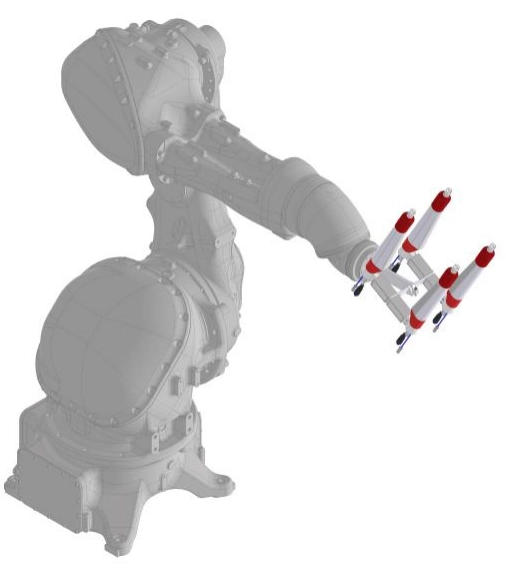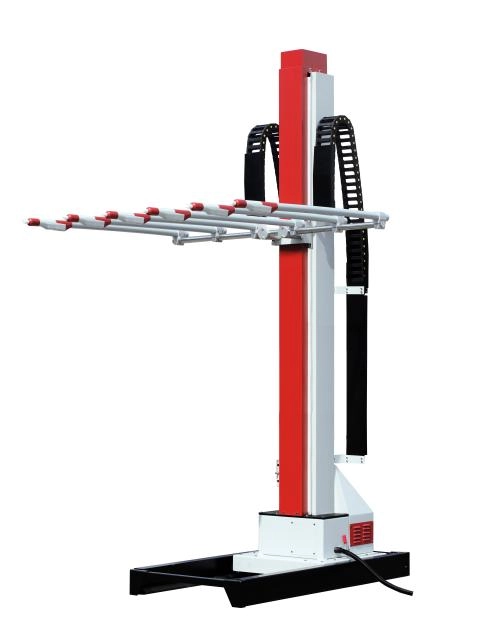Content Menu
● Understanding Manual Electrostatic Spray Guns and Traditional Liquid Spray
>> What is a Manual Electrostatic Spray Gun?
>> How Does Traditional Liquid Spray Work?
● Efficiency Comparison
>> Transfer Efficiency
>> Paint Waste and Environmental Considerations
>> Production Speed and Cleanup
● Quality of Finish
>> Uniformity and Surface Coverage
>> Smoothness and Appearance
● Challenges and Limitations
>> Faraday Cage Effect
>> Substrate Conductivity
>> Initial Cost and Equipment Complexity
● Practical Applications and Use Cases
>> Automotive Industry
>> Industrial Coatings
>> Disinfection and Sanitization
● Summary Table: Manual Electrostatic Spray Gun vs Traditional Liquid Spray
● Frequently Asked Questions (FAQs)
Understanding Manual Electrostatic Spray Guns and Traditional Liquid Spray
What is a Manual Electrostatic Spray Gun?
A manual electrostatic spray gun works by applying a high-voltage electrostatic charge to the paint particles as they exit the gun. These charged particles are attracted to the grounded target object, which carries an opposite charge. This principle dramatically increases the amount of paint that sticks to the object, reducing overspray and waste. Common applications include automotive painting and industrial coatings due to the excellent finish and efficiency these guns provide.

How Does Traditional Liquid Spray Work?
Traditional liquid spray guns atomize paint using compressed air without any electrostatic charge. The paint particles disperse through the air and coat the surface primarily by direct contact. Because there is no electrostatic attraction, significant overspray occurs — a substantial portion of the paint misses the target and settles on the surrounding environment.
Efficiency Comparison
Transfer Efficiency
Transfer efficiency refers to the percentage of paint that actually adheres to the target surface versus the amount sprayed. Manual electrostatic spray guns typically achieve transfer efficiencies between 80% and 95%, depending on conditions and equipment used. By contrast, traditional liquid spray guns generally have much lower transfer efficiencies, often around 40% to 60%. This efficiency gap translates directly into material savings and reduced environmental impact.
Paint Waste and Environmental Considerations
Lower transfer efficiency in traditional spraying results in higher paint consumption and more volatile organic compound (VOC) emissions due to overspray. Electrostatic spray technology drastically cuts down paint waste and VOCs, contributing to greener production processes and less pollution.
Production Speed and Cleanup
Because manual electrostatic spray guns apply paint more efficiently, production times are often reduced. The quicker coverage means fewer passes are needed to achieve a uniform finish. Additionally, less overspray means less cleanup and reduced maintenance for surrounding areas and equipment.
Quality of Finish
Uniformity and Surface Coverage
Electrostatic spraying enables paint particles to envelop the target, reaching surfaces through wrapping effect and applying a more even layer. This is especially beneficial for complex shapes and recessed areas where traditional spray guns may struggle to coat thoroughly.
Smoothness and Appearance
The charged particles in electrostatic spray guns are smaller and more uniformly spread, creating a smooth, bubble-free finish. Traditional liquid spray methods may cause uneven coating thickness and higher chances of defects like runs or sags.
Challenges and Limitations
Faraday Cage Effect
One notable challenge in electrostatic spraying is the Faraday cage effect, where the charged paint tends to accumulate on edges and corners rather than inside recessed or shielded areas. This can be mitigated by combining electrostatic spray for general coverage with traditional spray in recessed spots or by adjusting electrostatic parameters.
Substrate Conductivity
Electrostatic spraying works best on conductive materials or surfaces primed with conductive coatings. Non-conductive materials like plastics often require special primers or treatments to optimize the electrostatic effect.
Initial Cost and Equipment Complexity
Manual electrostatic spray guns generally have a higher upfront cost due to the technology and power supply systems involved. However, the return on investment often comes quickly from savings on paint, reduced waste, and faster throughput.
Practical Applications and Use Cases
Automotive Industry
Cars and vehicles benefit from electrostatic spray guns due to the ability to coat complex shapes smoothly and efficiently. The technology helps manufacturers save on expensive automotive paints while ensuring a durable and attractive finish.
Industrial Coatings
In manufacturing of machinery, appliances, and metal parts, electrostatic spray coating provides a uniform corrosion-resistant layer that extends product life and enhances aesthetics.
Disinfection and Sanitization
Modified handheld electrostatic spray guns are also used for applying disinfectants and sanitizing agents in hospitals, hotels, and public spaces because the charged droplets wrap around surfaces, covering hard-to-reach areas effectively.
Summary Table: Manual Electrostatic Spray Gun vs Traditional Liquid Spray
| Feature | Manual Electrostatic Spray Gun | Traditional Liquid Spray |
| Transfer Efficiency | 80% - 95% | 40% - 60% |
| Paint Waste | Low, minimal overspray | Higher, significant overspray |
| Finish Quality | Smooth, even, bubble-free | Variable, risk of runs and sags |
| Coverage | Wraps around objects, uniform coat | Direct line of sight only |
| Environmental Impact | Reduced VOC emissions | Higher VOC emissions |
| Equipment Cost | Higher initial investment | Lower upfront cost |
| Substrate Requirements | Best on conductive or primed surfaces | No special substrate needs |
| Production Speed | Faster due to less overspray and coverage | Slower, more coats needed |
| Challenges | Faraday cage effect, complexity | Overspray and waste |
Frequently Asked Questions (FAQs)
Q1: Can manual electrostatic spray guns be used on plastic surfaces?
A1: Yes, but plastics typically require conductive primers to optimize electrostatic attraction and achieve uniform coating.
Q2: What is the main reason for higher efficiency in electrostatic spraying?
A2: The electrostatic charge causes paint particles to be attracted to and adhere more tightly to the target surface, reducing overspray.
Q3: Are electrostatic spray guns more expensive to maintain?
A3: They require some specialized maintenance for the high-voltage system but reduce paint waste and cleanup time, often balancing overall costs.
Q4: How does the Faraday cage effect impact electrostatic spray quality?
A4: It causes paint to collect more on edges than recessed areas, but adjusting voltage and spraying technique can mitigate this issue.
Q5: Is manual electrostatic spraying suitable for small-scale or hobbyist use?
A5: Due to equipment cost and complexity, it's more common in industrial settings, though some smaller units exist for specialized applications.

[1] https://www.graco.com/us/en/in-plant-manufacturing/solutions/articles/advantages-of-spraying-with-electrostatic-guns.html
[2] https://patents.google.com/patent/WO2022027736A1/en
[3] https://ai.otson.com/62052-2/
[4] https://patents.google.com/patent/CN101351273B/en
[5] https://www.graco.com/us/en/in-plant-manufacturing/solutions/articles/conventional-vs-electrostatic-spray-guns.html
[6] https://www.academia.edu/62966271/Electrostatic_spray_processes
[7] https://www.fusoseiki.co.jp/en/column/knowledge/191.html
[8] https://patents.google.com/patent/CN100360246C/zh
[9] https://www.codinter.com/en/electrostatic-vs-conventional-painting-which-process-is-better/
[10] https://patents.google.com/patent/CN1006447B/zh
Hot Tags: China, Global, OEM, private label, manufacturers, factory, suppliers, manufacturing company










































 .
. 